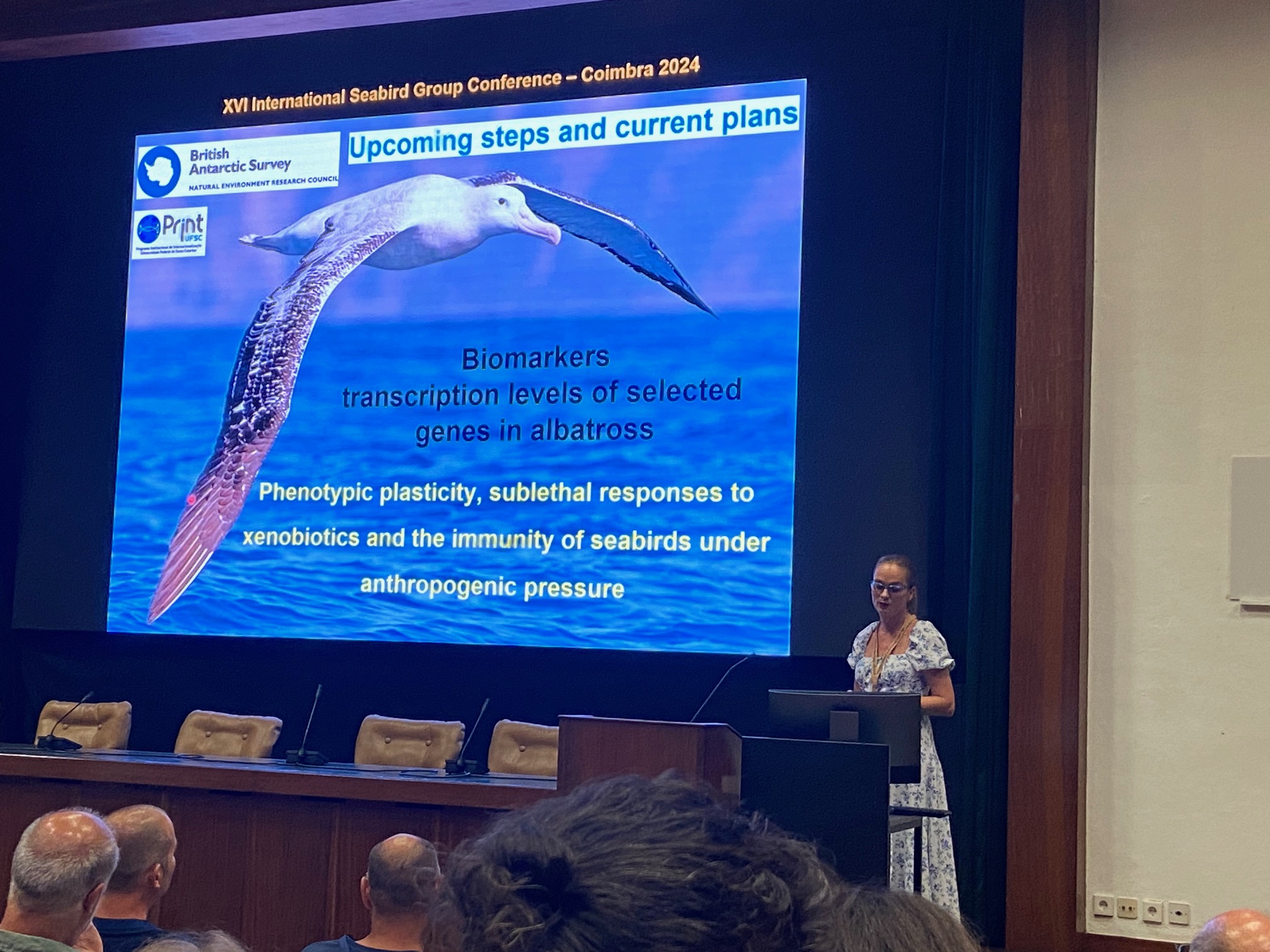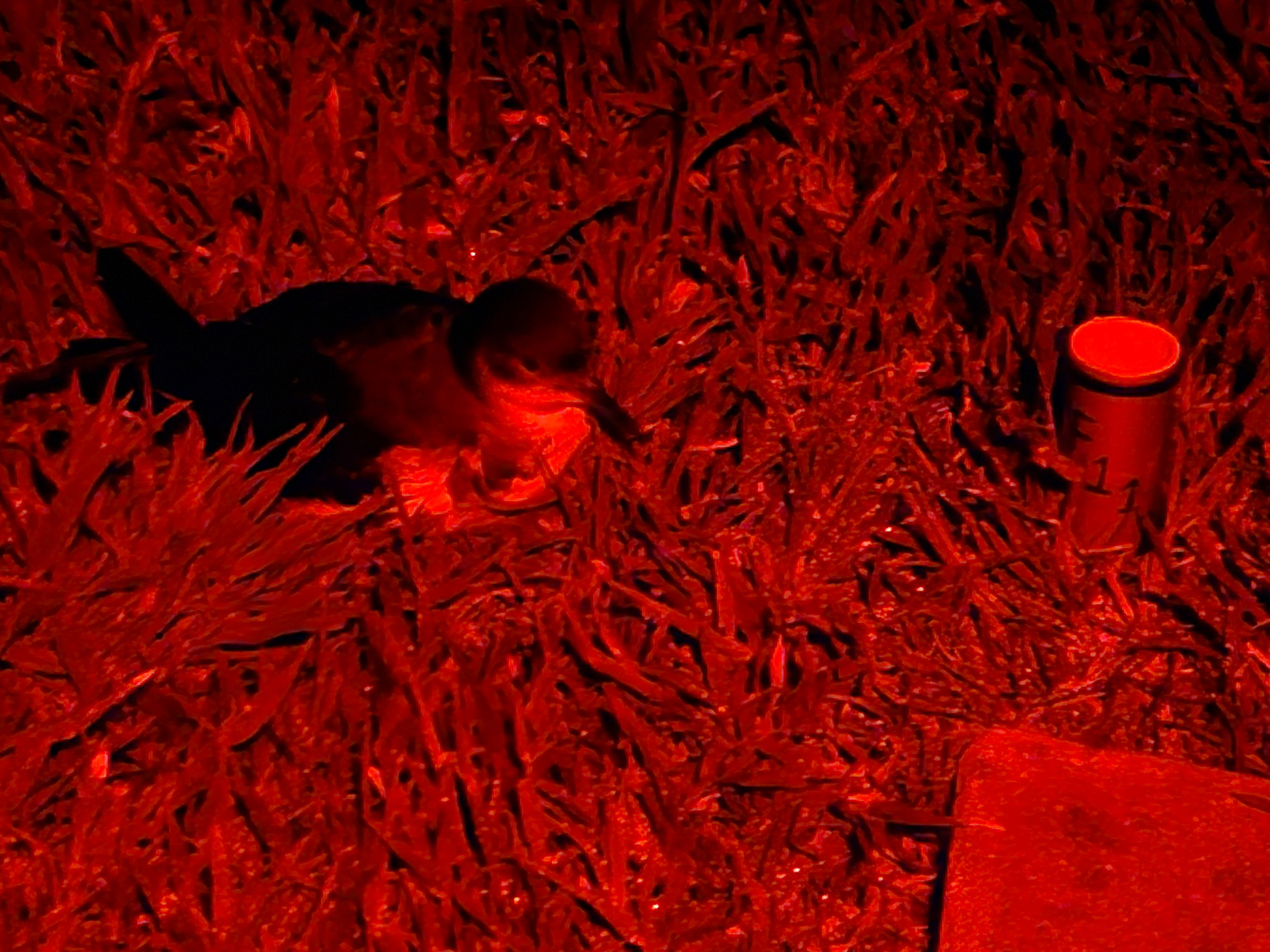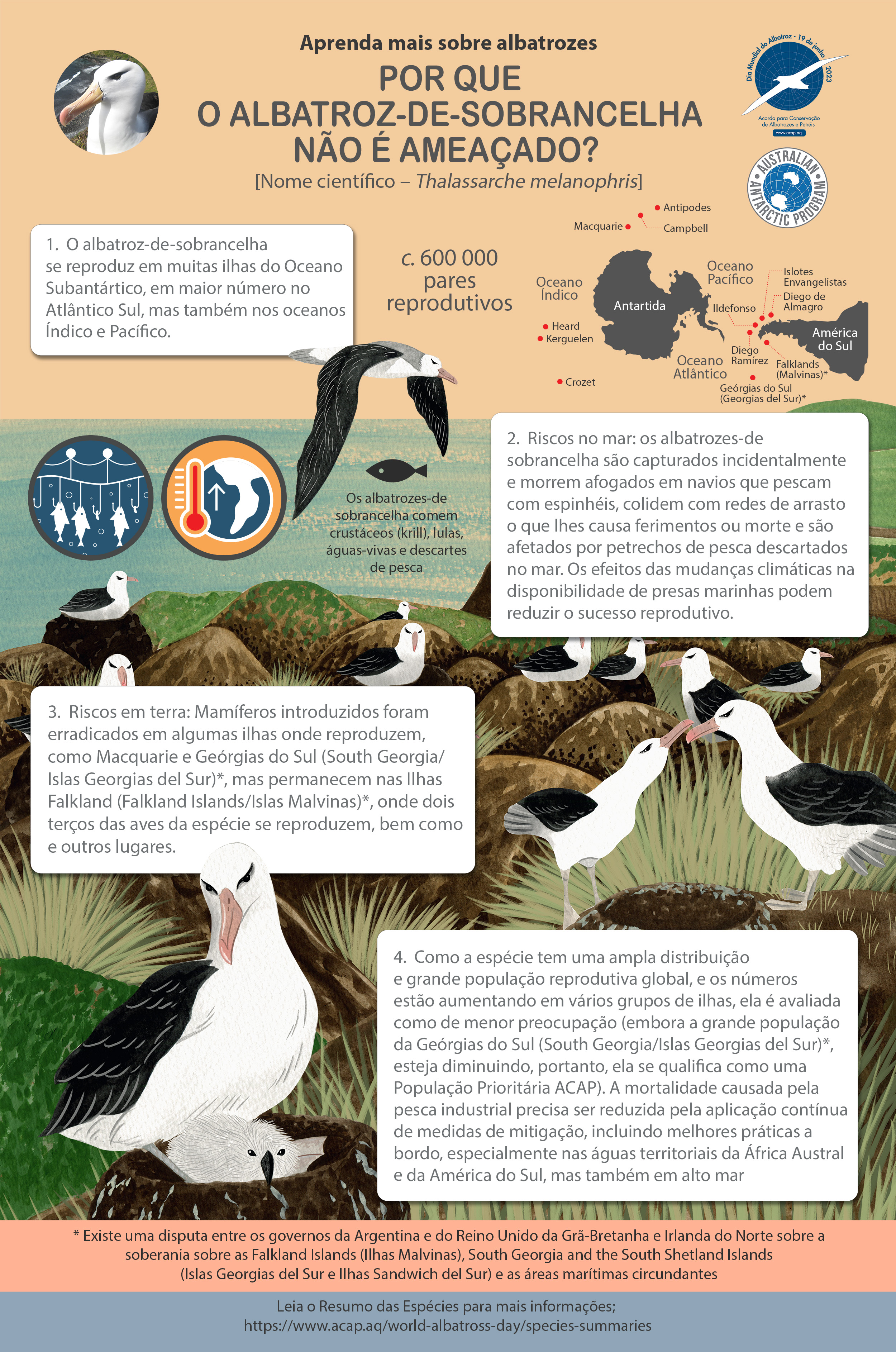
Patricia Serafini presents her talk “Biochemical and molecular biomarkers in Manx Shearwaters Puffinus puffinus and associations to marine pollution” at the 16th International Seabird Conference in Coimbra, Portugal in September 2024
Patricia Pereira Serafini is a Brazilian wildlife veterinarian specializing in ecology and conservation, particularly focusing on albatrosses, petrels and other seabirds. She is also Co-convenor of ACAP’s Population and Conservation Status Working Group (PaCSWG).
Patricia is an environmental analyst at the National Center for Research and Conservation of Wild Birds (CEMAVE/ICMBio/Ministry of Environment), in Brazil. Her expertise lies in a One Health approach to the conservation crisis facing pelagic seabirds, and her research involves population monitoring, molecular biology, biochemistry, ecotoxicology and epidemiology. Currently she is on a study visit to the United Kingdom and has spent the last few months based at the Department of Biology, University of Oxford, with fieldwork conducted on Manx Shearwaters Puffinus puffinus on the three United Kingdom islands of Skomer, Wales, Lighthouse (Copeland Bird Observatory), Northern Ireland, and Rum, Scotland.

Manx Shearwater at night in the biggest colony in the world on the island of Skomer. Wales, UK, photograph during field work by Patricia Serafini
Patricia is currently undertaking PhD research at the Universidade Federal de Santa Catarina (UFSC) in southern Brazil, investigating the health impact of ocean pollution on albatrosses and petrels, using mostly a molecular approach. She writes:
“My PhD research focuses on assessing how environmental impacts affect pelagic seabirds at biochemical and molecular levels. Through research collaborations with the University of Oxford and the British Antarctic Survey, our work bridges important research institutions across continents. The study addresses a critical gap in our understanding of ocean pollution's impact on pelagic seabirds. Although plastic ingestion and pollutants are frequently detected in albatrosses and petrels, the mere presence of contaminants doesn't necessarily indicate immediate threats to their health and survival. Population-level impacts from chronic pollution may take years to become detectable, highlighting the importance of understanding sublethal effects.
“Using Manx Shearwaters as a model procellariiform species, so far we have analysed 155 liver samples from seabirds stranded along Brazilian beaches. The study revealed significant associations between specific pollutants and sub-lethal responses:
Organochlorine pesticides (particularly Mirex and Drins) showed significant associations with biotransformation enzymatic activity
Polychlorinated biphenyls (PCBs) and hexachlorobenzene (HCB) demonstrated notable impacts on classical ecotoxicological molecular biomarkers
Higher levels of certain pollutants appear to suppress rather than stimulate biotransformation gene transcription
HCB showed potential endocrine-disrupting effects at a molecular level
Interestingly, no consistent correlation was found between plastic ingestion and the selected ecotoxicological biomarkers for Manx Shearwaters.”
More information is available in the published first chapter of Patricia’s thesis.
Patricia continues: “My research is now advancing into an exciting new phase focusing on two ACAP-listed species, the Wandering Albatross Diomedea exulans and Atlantic Yellow-nosed Albatross Thalassarche chlororhynchos. Through a collaboration with the British Antarctic Survey, Instituto Chico Mendes de Conservação da Biodiversidade (ICMBio) and Instituto Tecnológico Vale (ITV), high-quality, chromosome-level genome sequencing and liver transcriptome data have been obtained for both species. Our current work focuses on completing the genome/transcriptome assembly and annotation for these remarkable seabirds. This groundbreaking genetic work aims to understand better these magnificent seabirds’ phenotypic plasticity, responses to xenobiotics and immunity under anthropogenic pressure. The project is scheduled for completion in 2026.”

All smiles at the 11th Meeting of the ACAP Advisory Committee, May 2019. From left Tatiana Neves, Advisory Committee Vice Chair, John Cooper, ACAP Emeritus Information Officer and Patricia Serafini
Patricia concludes that her PhD research demonstrates the value of seabirds as indicators of marine pollution and will provide new tools for detecting sublethal impacts before they manifest at population levels. These early indicators could prove crucial for informing timely management decisions to protect these remarkable species.

The Black-browed Albatross is a regular visitor to the waters of Brazil
On a more personal note I have met Patricia at several ACAP meetings, the last in 2019 in her home country when she most ably co-hosted the 11th Meeting of the ACAP Advisory Committee. She has also willingly and efficiently provided Portuguese texts for an ongoing series of ACAP Species Infographics for the six ACAP-listed albatrosses and petrels that regularly visit Brazilian waters. It remains a pleasure to continue to work with her!
John Cooper, Emeritus Information Officer, Agreement on the Conservation of Albatrosses and Petrels, 05 November 2024

 English
English  Français
Français  Español
Español